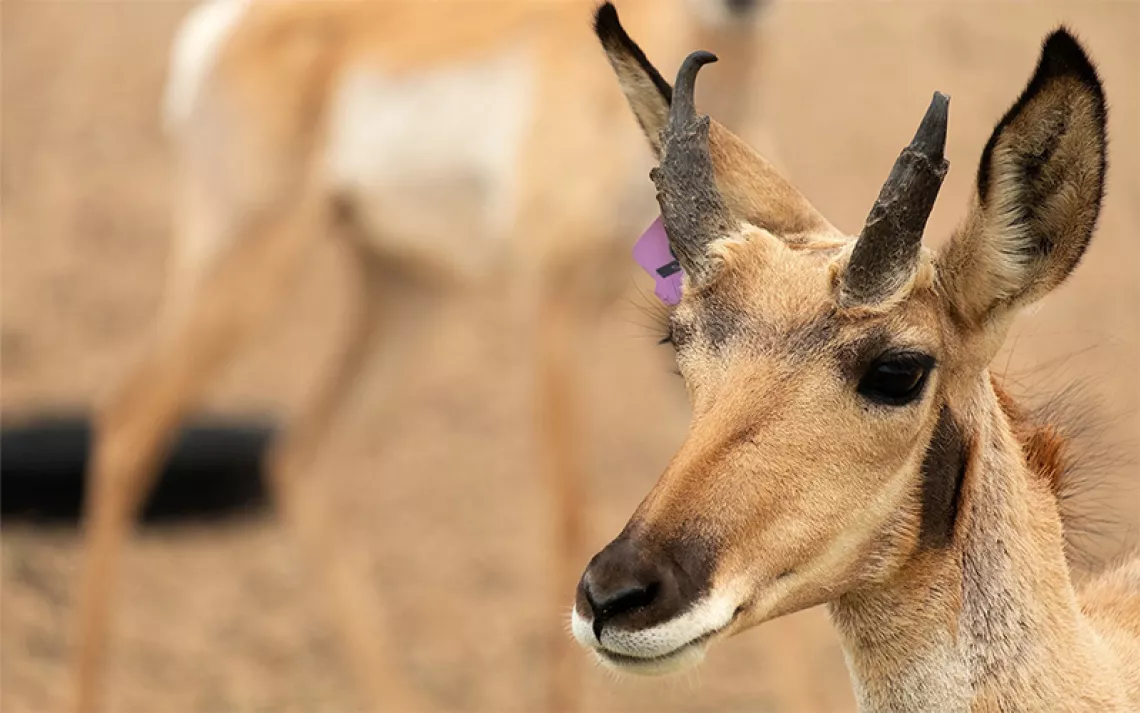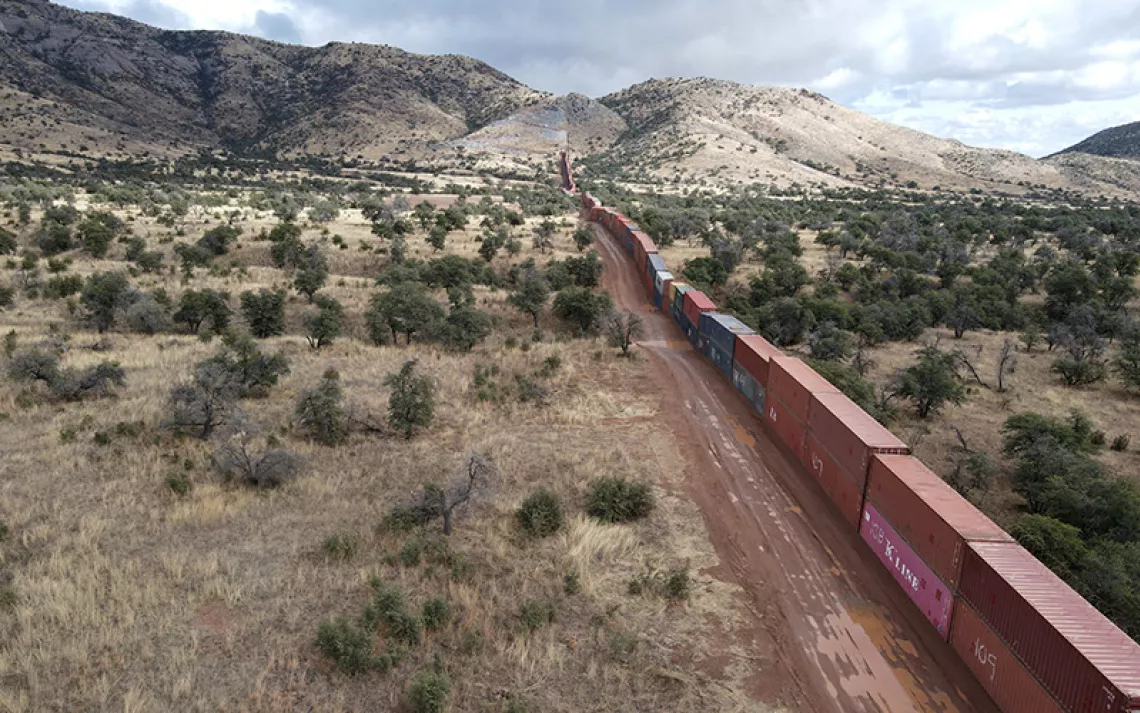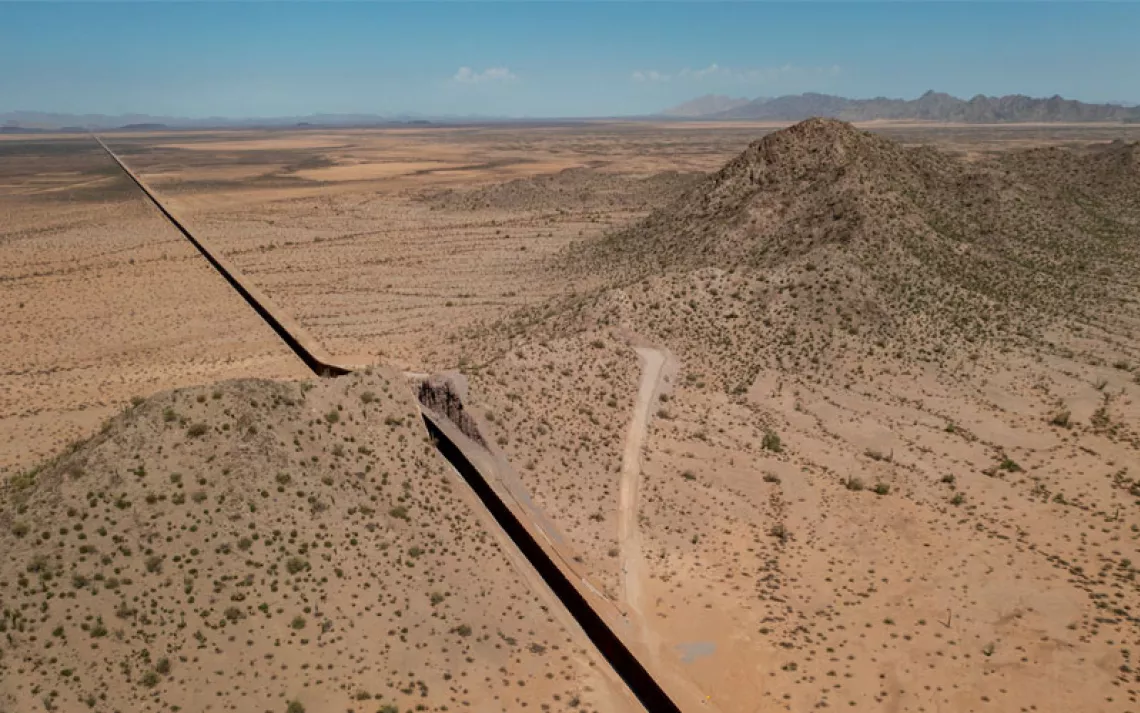In South Texas, Border Wall Construction Imminent
Trump administration targets Rio Grande Valley for new wall
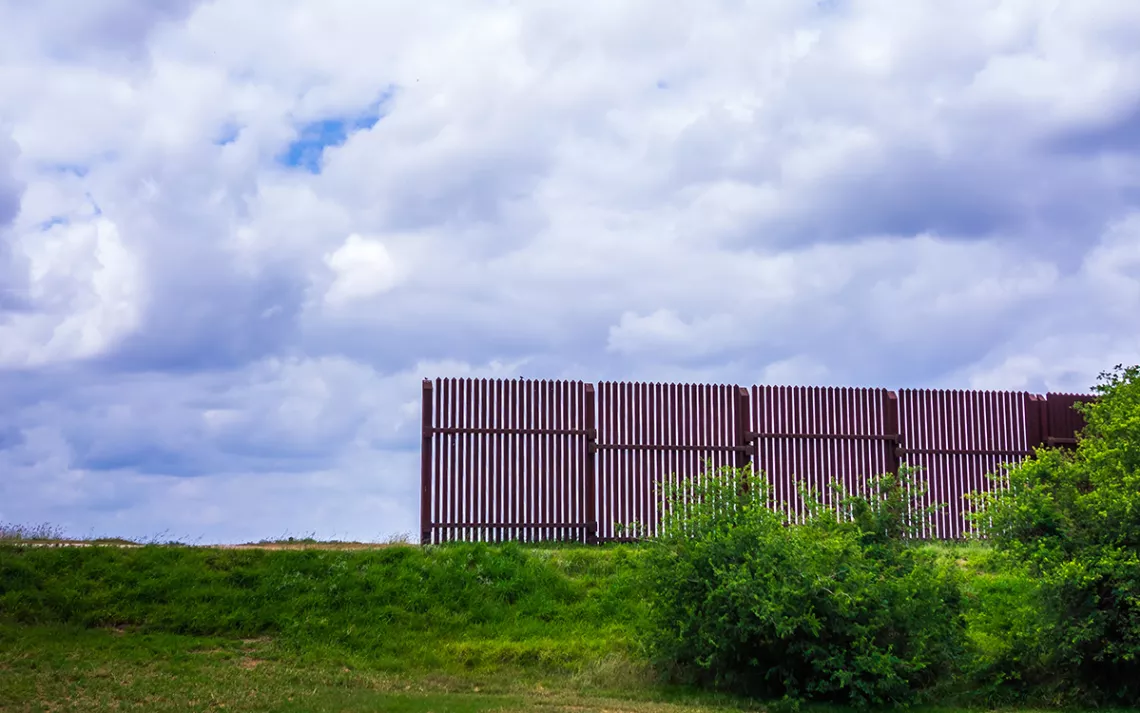
Photo by digidreamgrafix/iStock
President Trump appears poised to accept a government-funding package even without the full $5.7 billion he wanted for his border wall. But that isn’t stopping him from trying to get a wall built. In the past week, heavy machinery has rolled into Texas’s Rio Grande Valley as the Trump administration looks to push construction on a new section of border wall—a project that threatens protected natural areas, including a butterfly sanctuary and a state park. The development comes amidst the intensifying militarization of the entire border region, with US troops deploying lethal razor wire in Arizona.
On Super Bowl Sunday, when millions of Americans were watching the game, Customs and Border Protection (CBP) moved an excavator onto a flood-control levee in Mission, Texas—inside a national wildlife refuge tract between the National Butterfly Center and Bentsen–Rio Grande Valley State Park. CBP says that construction will begin in mid-February.
The excavator is armed with a mulcher attachment capable of shredding trees in a matter of seconds. The machinery will create a 150-foot “clearing zone” in preparation for wall construction. “It’s like a Roto-Rooter or Cuisinart that kills every bird, snake, and bug in its path,” said National Butterfly Center executive director Marianna Treviño-Wright. She noted that her staff had recently found and removed two baby owls from a nest they found in a wooded area marked for clearing. “They’re doing this in a horrifically violent manner.”
The machinery was transported to the national wildlife refuge tract through butterfly center property. CBP also installed a lock on a gate that prevents sanctuary staff from accessing the center’s own property south of the levee. On Monday, the center filed a restraining order seeking to block wall construction on its property as well as to prevent the Trump administration from moving machinery across the sanctuary.
A wall at the butterfly center would cut off 70 percent of the sanctuary from public access, destroy vital wildlife habitat, and threaten the future of the entire center. “People have a choice of where they want to go and experience nature and spend their money,” Treviño-Wright said. “Why would they want to come and do it in a place that looks like a prison yard, chasing butterflies in the shadow of the border wall slats?”
On the other side of the refuge tract, where construction is slated to begin, Bentsen–Rio Grande Valley State Park is also targeted for an eventual wall. The park is the headquarters of the World Birding Center, a network of nine birding destinations across the Rio Grande Valley, where eco-tourism is a $463-million-per-year industry. The wall through the state park would divide the visitor center from the rest of the property, including all the trails. In a 2017 letter to CBP, Texas Parks and Wildlife director Carter Smith wrote that “construction of the proposed wall would certainly call into question whether [Texas Parks and Wildlife] could continue to safely operate the area as a state park.”
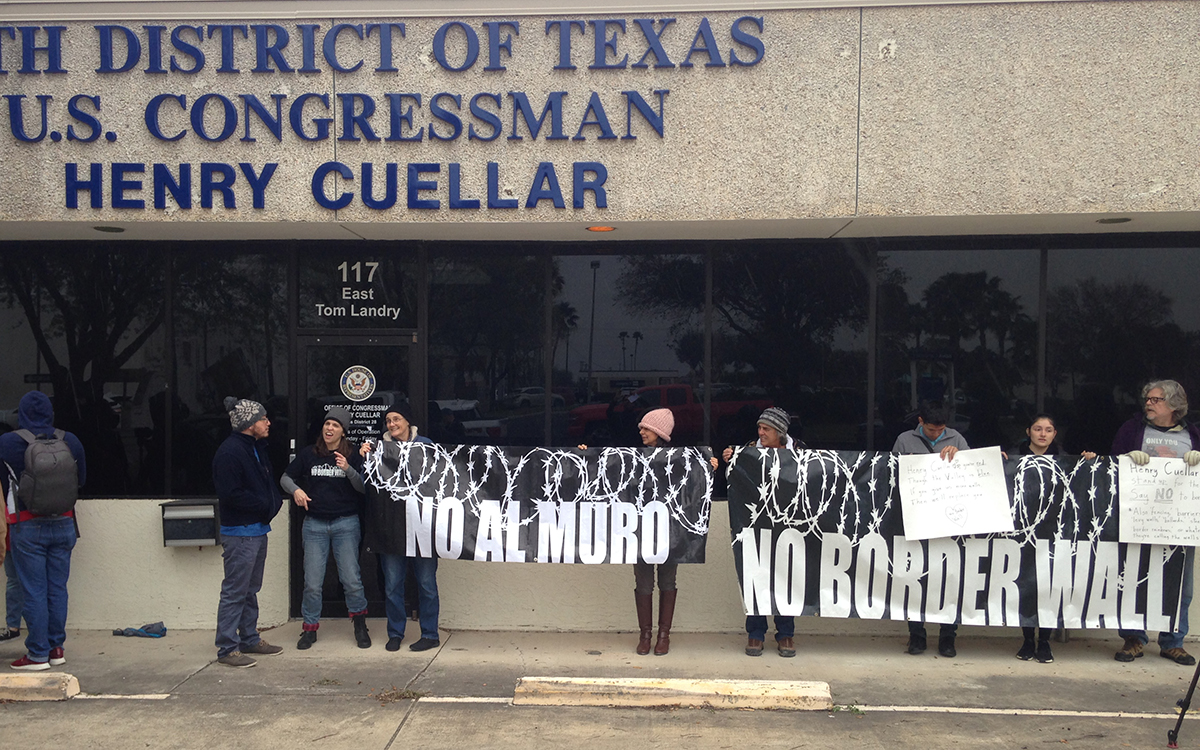
Photo by Daniel Blue Tyx
The imminent wall construction in the Rio Grande Valley occurs as the entire US-Mexico border region confronts new levels of militarization, says Dan Millis, the Borderlands Program manager for the Sierra Club Grand Canyon Chapter. In El Paso, where Trump and Beto O’Rourke held competing border wall rallies on Monday, four miles of wall were recently constructed though two historic neighborhoods without any community input, or the government even going through the formality of waiving environmental laws. In New Mexico, a 20-mile section of steel bollard wall replaced a more wildlife-friendly vehicle barrier in what scientists consider a vital migratory corridor for the endangered Mexican gray wolf.
Most recently, in Nogales, Arizona, US troops attached six rows of lethal razor wire that stretch 20 feet high to an existing border fence that cuts through urban areas in neighboring Sonora. The razor wire poses a threat to children, pets, and wildlife, and it was put in place without any study of its impact or plans for its eventual cleanup. “Razor wire is intended to maim, harm, and kill,” Millis said. “It’s so demonstrative of the place that we are in right now.”
Meanwhile, in Washington, D.C., the bipartisan congressional committee charged with crafting border security legislation to head off another government shutdown announced on Monday a preliminary plan to fund 55 additional miles of wall in the Rio Grande Valley at a cost of $1.375 billion.
“Walls are not warranted. Communities don’t want them. There’s no need for them, and they just cause problems,” Millis said, noting that among other potential negative effects is the possibility of severe flooding events, especially if the wall is constructed in locations near the Rio Grande River.
While many details are still murky—and it’s unclear if Trump will accept the final legislation anyway—the impact of any new wall funding is already becoming clear. In Laredo, CBP has announced that its chief priority is wall construction in the urban center, which includes historic buildings, low- and middle-income residential areas, a community college, and parks that are popular with birders and kayakers.
In the Rio Grande Valley, the Army Corps of Engineers has already begun contacting homeowners whose land is being targeted for new construction, possibly funded with 2019 appropriations. Two of the homeowners spoke at a press conference organized by the Lower Rio Grande Valley Sierra Club Chapter on February 8. It was held outside the Mission office of Representative Henry Cuellar (D-Laredo), who is a member of the conference committee.
“I live 165 feet from the river. If this wall is built, it’s going to go through my house,” teacher Nayda Alvarez said, holding a letter that she was planning to deliver to the congressman. Alvarez’s home is in Starr County, 40 miles upriver from Mission. “I’ve lived there for 40 years, and it’s been in my family for over five generations. People say, ‘Well, you’re going to get compensated,’ but there’s no getting compensated for your home. Our whole lives are there.”
“We’ve been there seven generations or more,” her neighbor Yvette Gaytan added. “We were all raised there. For us, we don’t see a crisis. We’re there day and night, and we don’t see a dangerous border the way they say.”
 The Magazine of The Sierra Club
The Magazine of The Sierra Club

